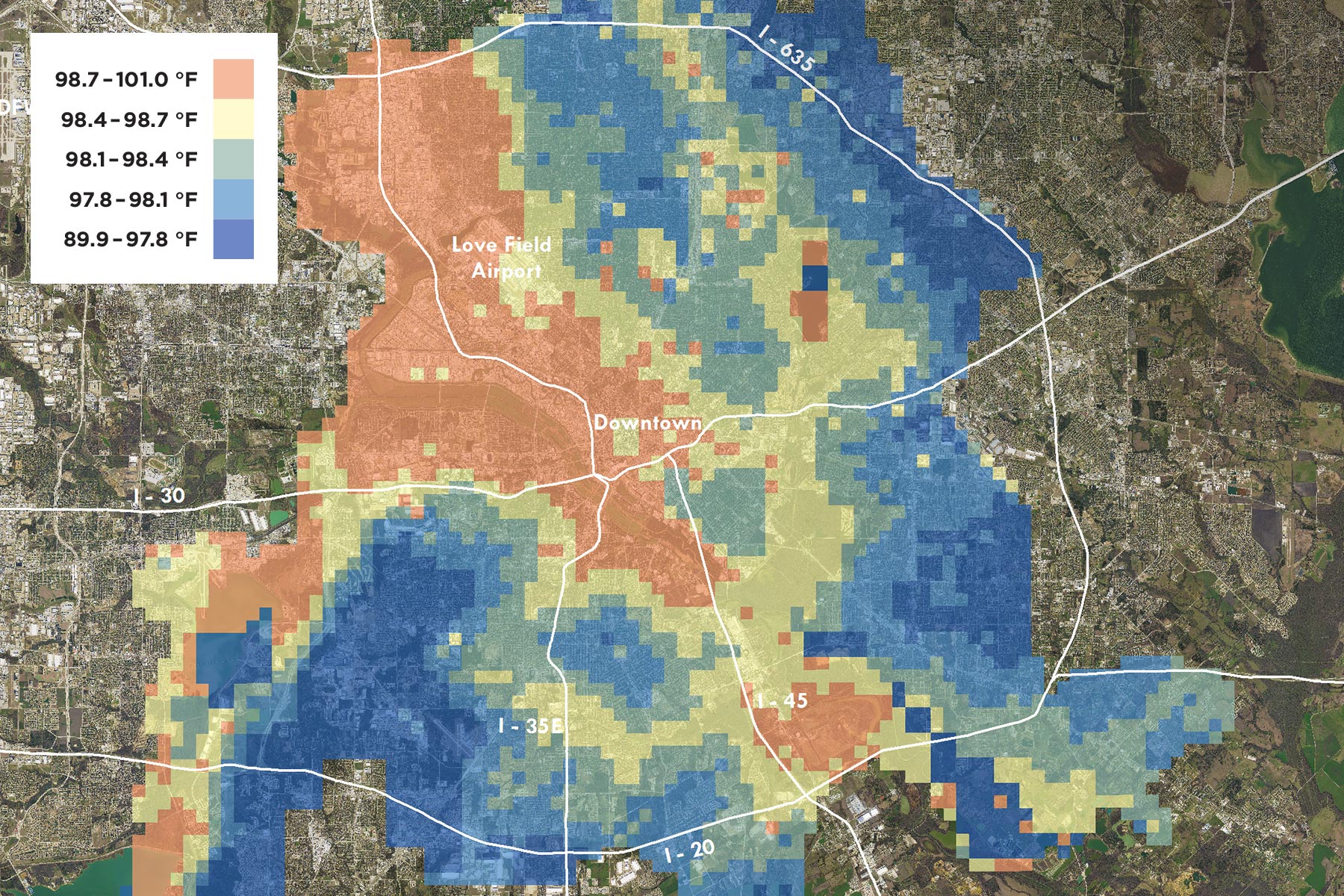When the legislature began its special session, in mid-July, Gov. Greg Abbott urged legislators to outlaw municipal tree-conservation ordinances, which exist in about 50 Texas cities, including Dallas. He has called the ordinances—requiring landowners to pay a fee for felling trees or to plant trees as compensation—“socialistic” infringements on property owners’ rights.
At the same time, a Dallas-based nonprofit called the Texas Trees Foundation was working to finalize a report on an important study that shows exactly how beneficial trees are to big cities. Titled “Dallas Urban Heat Management Study,” the report reveals research conducted by the Urban Climate Lab of the Georgia Institute of Technology. The Texas Trees Foundation touts it as being “among the first comprehensive heat management assessments focused on a major U.S. city.” The short version: in Dallas, trees save lives.
It all has to do with what researchers call the “urban heat island effect.” Large cities are warmer than the countryside around them, sometimes by more than 10 degrees. Anyone who has ever set foot in a parking lot on a triple-digit day knows why. Building materials like concrete and asphalt absorb the sun’s energy. Trees help by not only providing shade, but by cooling the air around them through evaporation and transpiration (science!). Since the 1960s, tree loss and development have driven up temperatures in large cities faster than global climate change has. Some cities have acted in response. Chicago planted 500,000 trees in the last 15 years to fight rising temperatures. Los Angeles now requires builders to use heat-reflecting roofing materials.
Here in Dallas, the Texas Trees Foundation study used a climate model to analyze data from 2011, breaking down the entire city into a grid whose squares measured about six city blocks. Researchers found that the hottest parts of the city that year hit an average high temperature over 101 degrees for 150 days, and an estimated 112 people in the city died from heat-related causes, with 53 of those directly related to the urban heat island effect. By planting more trees and using “cooler” building materials, we could reduce those heat island deaths by 22 percent.
Matt Grubisich, director of operations and urban forestry at the Texas Trees Foundation, takes a dim view of Abbott’s attack on local tree ordinances. “I think it’s ridiculous, to be perfectly honest with you,” he says. “The trees aside, trying to regulate local ordinances at a state level, that’s—he calls himself a Republican. I find it really interesting.”







